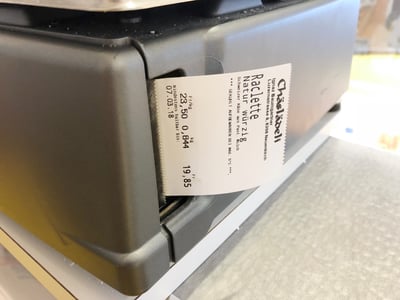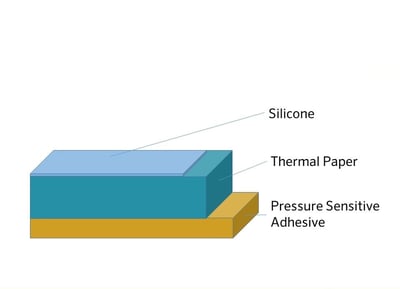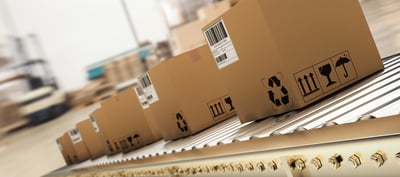Introduction
Labels are an integral part of our everyday life. They are used for carrying advertising and information and we perceive them both consciously and often also unconsciously.
But did you know that 50% of a label ends up as waste?
Usually, labels are supplied on a release liner. This liner is disposed of as waste after the label has been applied. If a label could be supplied without a liner, then hundreds of tons of non-recyclable paper waste could be saved.
What does a linerless label consist of?
Classic labels are supplied on a release liner. After the label has been applied, this liner is disposed of as waste.
As the name suggests, linerless labels do without this liner. Instead, the adhesive layer is attached directly to the paper layer underneath in a similar way to a roll of adhesive tape.
Which applications are covered by linerless labels?
Linerless labels are manufactured from transparent foils or paper. The labels can be printed in color or – as in many cases – left unprinted. Thermal papers are normally used. The labels are printed with information using a thermal printer immediately before application. As they have no liner, they cannot be punched in various different shapes. While the label length is variable, the label format can only be rectangular. As a result, linerless labels are the ideal solution when it comes to displaying short-term, informative content. Labels that are used at the point of sale to persuade consumers to buy products should still be manufactured with classic release liners as before.

What are the advantages of linerless labels?
As linerless labels do not require a liner, they have several advantages:
- 50 to 60% more labels per roll
- Less storage space required for the same number of labels
- Fewer roll changes
- Variable label length and flexible print format
- No scrap web waste
- No liner waste
- No storage space required for release liner waste
- No transport and disposal costs for release liner and scrap web waste
- Saves resources
- Environmentally friendly
- 30% reduction in material costs
- Up to 15% savings in total costs
What do I need to manufacture a linerless label?
- Paper, foil or thermal paper
- Silicone
- Adhesive

Can I use any paper, silicone or adhesive?
The answer here is a resounding “no”!
Only use high-quality thermal papers, silicones and adhesives. The thermal papers must be such that good fixation of the adhesive to the reverse side is possible. At the same time, they must also be impermeable so that no part of the adhesive can penetrate through the paper into the thermal layer and render the printed information illegible. The surface must be such that good fixation of the silicone is guaranteed without the silicone being absorbed into the surface and eliminating the separation effect.
The silicones are usually UV-curing. Pay attention to the correct viscosity! When the viscosity is low, the silicone penetrates the surface of the paper and can then no longer be cured sufficiently.
A decisive factor is selecting the right adhesive. Aqueous adhesives penetrate the paper structure and have to then dry out. The paper warps during drying and renders the label roll unusable. This rules out both dispersion adhesives and solvent-based adhesives, thus leaving classic hot melts and radiation hot melts. Classic hot melts are easy to apply – simply melt, coat, wind and you’re done. Selecting the right product is also important when using hot melts! After all, the adhesive has to meet not just one but several different requirements in this case:
- It must be possible to detach it from the silicone layer
- It must not soil the rollers of the printing system
- It must not soil the cutting device
- It must ensure secure adhesion of the label on the corresponding product
All of these requirements can only be met when adhesives of the highest quality are used.
Summary
Linerless labels are currently a cost-effective and environmentally friendly alternative to classic labels. While the area of application is limited, it is absolutely sufficient for labels with short-term, informative content – such as labels used in logistics.
Ensure the components used are of high quality to prevent unpleasant surprises.
Want to find out more about artimeltlinerless? Contact artimelt today.
